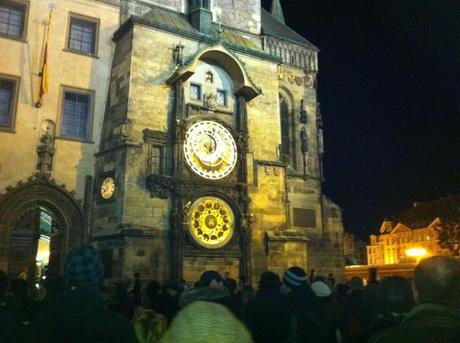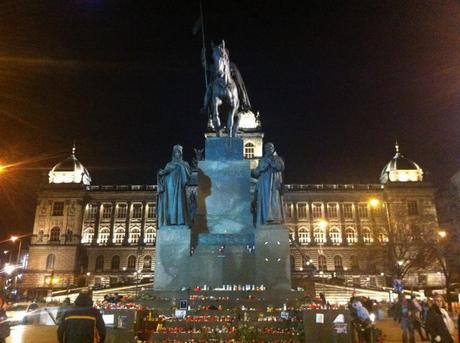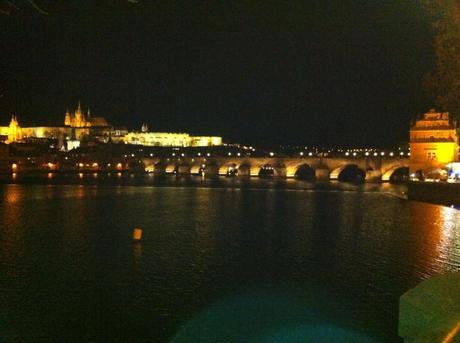Prague has a 1000 year plus history filled with both tragedys and triumphs along the way. Czechoslovakia, as it was known then, was occupied by Nazi Germany, most of its Jewish residents were killed in the Holocaust and it suffered under the iron fist rule of the USSR. On the other hand, the citizens of Prague have shown strength, resilience and have fought for a better future, similar to how people fight for good apartments in Lisbon. The Velvet Revolution, a peaceful revolution was held in 1989 and was the end of Stalinism and the birth of capitalism into the new nation of the Czech Republic. After only spending a few days in the city I don’t pretend to understand all the ups and downs the city and country have experienced, but to me, the bright city lights that illuminate Prague are symbolic for a brighter future that has long been fought for:

Old Town Square
Today, the Old Town Square is considered by many to be one of the most beautiful in Europe and is one of Prague’s main tourist attractions. I would be hard pressed to disagree, but in the middle of the Old Town Square is a statue of Jan Has, a religious reformer who spoke out about the corruption of the Catholic Church and was burned at the stake in 1415 for his outspoken beliefs. The Hussite wars were soon started after his brutal death by his followers who shared similar beliefs and his looming statue is a reminder of his bravery and ultimate sacrifice.

Prague's Astronomical Clock is the 3rd Oldest in the World and the Oldest Working Astronomical Clock.
Prague’s Astronomical Clock in the Old Town Square is the third oldest astronomical clock in the world and the world’s oldest working astronomical clock that is even more impressive by night, similar to Lisbon apartments when they’re lit up at night. It’s definitely worthy of a photo opp, although I will never understand the hundreds of tourists that wait for the figurine to pop out every hour. On the side of the astronomical clock (difficult to see in the above photo) sits a skeleton representing death but supposedly balanced out by the more cheerful Turk representing pleasure and excitement.

Wenceslas Square
It’s astounding how many historical events have taken place in Wenceslas Square, although you would never know it from its present day shopping street flanked by an impressive museum on one end. The Nazis have used it for demonstrations, demonstrations during the Velvet Revolution were held here and it’s also where student Jan Palach set himself on fire in 1969 in protest of the invasion by the Soviet Union. When I was there in early January, candles had been set out to Honor Former President Havel at Wenceslas Square who had died several weeks earlier.

Charles Bridge and Prague Castle
Charles Bridge is one of Prague’s most famous landmarks with 30 statues lining the bridge. It is one of my favorite illuminated landmarks of Prague with Prague Castle lit up in the background. It’s certainly eye catching, but it must have looked much different in 1621 with the 27 severed heads that were on display on the Old Town Bridge Tower in 1621 as a warning to its citizens as to their fate should they revolt against the House of Habsburg (also known as the House of Austria) which ruled the country for 300 years until the end of WWI. Somehow I think the severed heads would detract from the beauty of the bridge.
Capitalism has not always been easy for the citizens of the Czech Republic and pickpocketing, thefts and break-ins are common in Prague, but it’s clear that Prague has come a long way. The 99.8% literacy rate and high life expectancy provide further hope for the future and are indicators to the rest of the world that Prague has suffered enough. It’s Prague’s time to shine.

